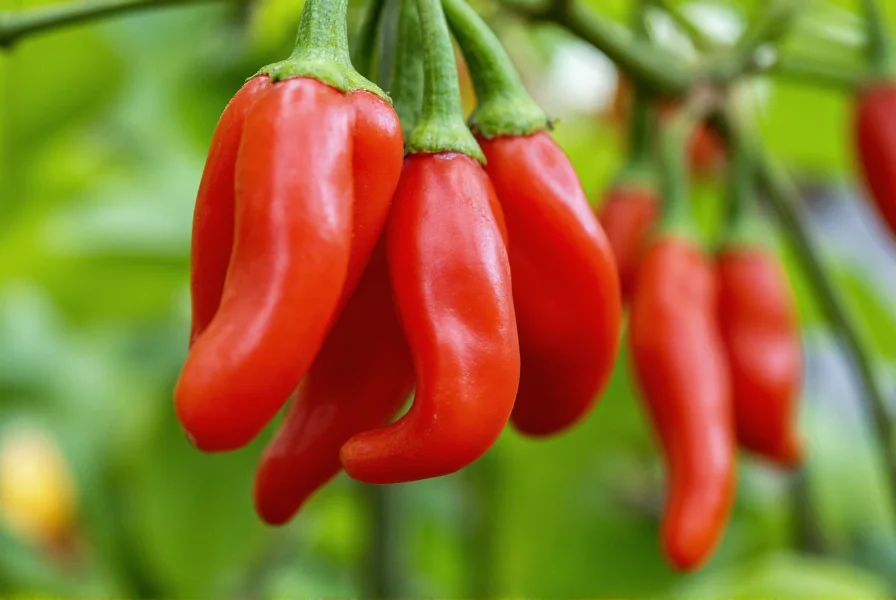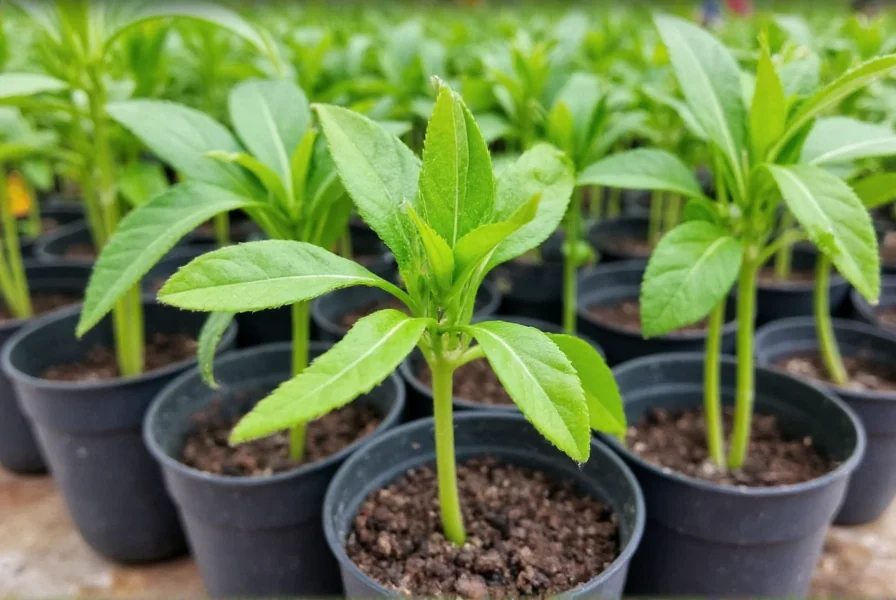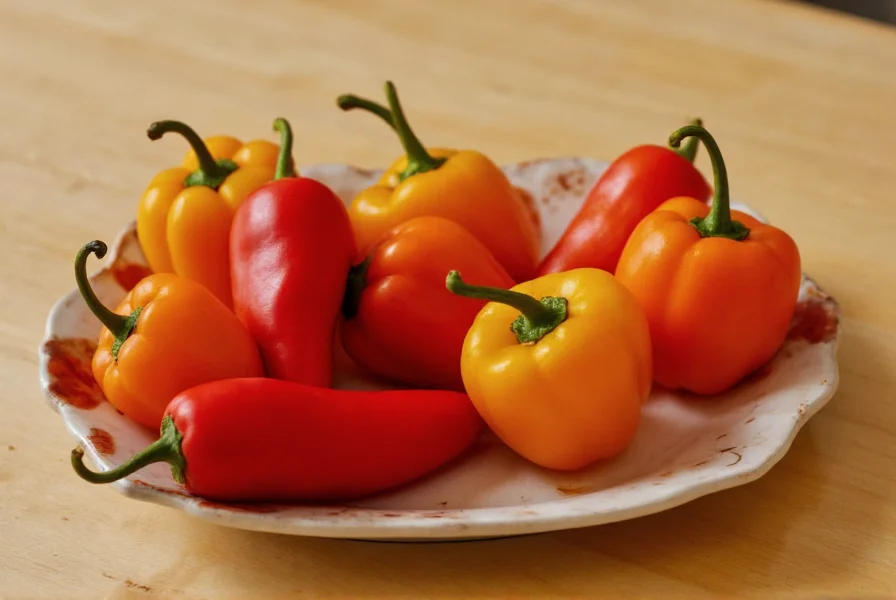When gardeners and chili enthusiasts search for information about chilli peter pepper, they're typically seeking reliable details about this uniquely shaped cultivar. This comprehensive guide provides factual information about the Peter pepper's characteristics, growing requirements, culinary applications, and how it compares to similar chili varieties.
Understanding the Peter Pepper: More Than Just Its Shape
While the Peter pepper's distinctive appearance often draws attention, this Capsicum annuum variety offers much more than visual interest. Botanically classified as Capsicum annuum 'Peter', this chili belongs to the same species as bell peppers, jalapeños, and cayenne peppers. The Peter pepper typically measures 2-4 inches in length with a curved shape that tapers to a point. As the fruit matures, it transitions from green to yellow, then orange, and finally to a deep red when fully ripe.
Heat Level and Flavor Profile
Among gardeners searching for chilli peter pepper heat level information, there's often confusion about where this variety falls on the Scoville scale. Peter peppers register between 5,000-30,000 Scoville Heat Units (SHU), placing them in the medium heat category. For comparison:
| Pepper Variety | Scoville Heat Units | Heat Comparison |
|---|---|---|
| Peter Pepper | 5,000-30,000 SHU | Moderate heat with fruity notes |
| Jalapeño | 2,500-8,000 SHU | Milder than most Peter peppers |
| Serrano | 10,000-23,000 SHU | Similar heat range to Peter pepper |
| Cayenne | 30,000-50,000 SHU | Generally hotter than Peter pepper |
Beyond its heat measurement, the Peter pepper delivers a complex flavor profile with distinct citrus and tropical fruit notes. When harvested green, it has a grassier flavor, while fully ripe red peppers develop sweeter, more complex notes that work well in salsas, sauces, and dried for powder.

Origin and Naming History
The exact origins of the Peter pepper remain somewhat mysterious, though evidence suggests it likely emerged in the southern United States during the 20th century. Despite common misconceptions, it's not an heirloom variety with centuries of history. The name "Peter" derives from the pepper's distinctive shape, which has made it a conversation piece among gardeners for decades.
Unlike many specialty peppers that have clear cultural lineages, the Peter pepper appears to be a more recent cultivar that gained popularity through gardening communities. Gardeners searching for where did Peter pepper originate will find limited historical documentation, as its development predates widespread internet gardening resources.
Growing Peter Peppers Successfully
For those interested in growing Peter pepper plants at home, this variety shares similar requirements with other Capsicum annuum cultivars. Peter peppers thrive in warm climates with long growing seasons. Key cultivation considerations include:
- Temperature requirements: Need consistent temperatures above 70°F (21°C) with optimal range of 75-85°F (24-29°C)
- Soil conditions: Well-draining soil with pH between 6.0-6.8
- Sun exposure: Minimum 6-8 hours of direct sunlight daily
- Water needs: Consistent moisture without waterlogging (1-2 inches per week)
- Time to maturity: Approximately 70-80 days from transplanting
Starting Peter pepper seeds indoors 8-10 weeks before the last frost date gives the plants sufficient time to mature in shorter growing seasons. The plants typically reach 18-24 inches in height and benefit from staking as the fruit develops. Gardeners in cooler climates can successfully grow Peter peppers in containers that can be moved indoors if temperatures drop.

Culinary Applications and Recipe Ideas
The versatility of Peter peppers makes them valuable for cooking with Peter peppers in various culinary applications. Their medium heat level and fruity flavor profile work well in numerous dishes:
- Fresh preparations: Excellent in salsas, relishes, and fresh sauces where their shape adds visual interest
- Grilling and roasting: Holds shape well when grilled, developing deeper flavors through caramelization
- Pickling: The distinctive shape makes pickled Peter peppers a conversation piece
- Drying: Can be dried whole and crushed for flakes or powder with concentrated flavor
- Stuffed peppers: The curved shape creates an interesting presentation for stuffed pepper dishes
When substituting Peter peppers in recipes calling for other medium-heat chilies, use a 1:1 ratio for jalapeños but reduce quantity by 25-50% when replacing hotter varieties like serranos. The fruitiness of Peter peppers particularly complements tropical flavors like mango, pineapple, and citrus.
Comparing Peter Peppers to Similar Varieties
Gardeners often wonder how Peter peppers compare to other uniquely shaped chilies. While the anatomical resemblance draws attention, the Peter pepper's growing requirements and culinary applications differ from similar-looking varieties:
- vs. Hungarian Wax peppers: Peter peppers generally have more consistent heat and distinctive shape
- vs. Banana peppers: Peter peppers are significantly hotter with more complex flavor
- vs. Fish peppers: Peter peppers lack the variegated foliage of fish peppers but share similar heat levels
- vs. Beaver Tail peppers: Both have distinctive shapes but Beaver Tails are generally milder
For those researching what pepper is similar to Peter pepper, the closest relatives in both appearance and heat are the Beaver Tail and certain strains of Hungarian Wax peppers, though none match the Peter pepper's distinctive curved shape exactly.
Where to Find Peter Pepper Seeds and Plants
While not as widely available as mainstream chili varieties, Peter pepper seeds can be found through several channels:
- Specialty seed catalogs focusing on heirloom and unique varieties
- Online gardening retailers (search for buy Peter pepper seeds online)
- Local gardening clubs and seed exchanges
- Some farmers' markets during planting season
When selecting seeds, look for reputable suppliers who specify the heat range and growing characteristics. Some seed companies offer different strains of Peter peppers with varying heat levels and size characteristics.
Frequently Asked Questions About Peter Peppers
Are Peter peppers naturally spicy or is their heat level modified?
Peter peppers naturally produce medium heat (5,000-30,000 SHU) as part of their genetic makeup. Their heat level isn't artificially modified but can vary based on growing conditions, with stressors like water restriction potentially increasing capsaicin production.
How long does it take for Peter peppers to mature from seed?
From seed to harvest, Peter peppers typically require 90-100 days. When started indoors 8-10 weeks before the last frost and transplanted outdoors after temperatures stabilize, they usually produce mature peppers 70-80 days after transplanting.
Can Peter peppers be grown in containers?
Yes, Peter peppers grow well in containers of at least 5 gallons (20 liters) with proper drainage. Container growing allows gardeners in cooler climates to move plants indoors if temperatures drop below 50°F (10°C), extending the growing season.
What's the best way to preserve harvested Peter peppers?
Peter peppers preserve well through multiple methods: freezing maintains fresh flavor, drying concentrates heat and flavor for flakes or powder, and pickling preserves both shape and tangy heat. For long-term storage, drying produces the most versatile preserved product.
Do Peter peppers change color as they ripen?
Yes, Peter peppers follow the typical ripening pattern of many chili varieties, starting green, progressing through yellow and orange stages, and finally reaching a deep red when fully mature. The heat level and flavor complexity increase as they ripen to red.











 浙公网安备
33010002000092号
浙公网安备
33010002000092号 浙B2-20120091-4
浙B2-20120091-4